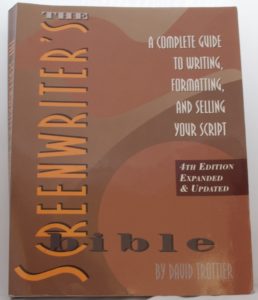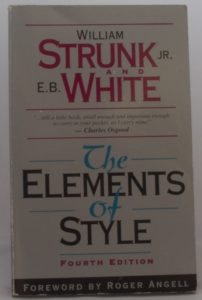Buying a book on how to write is one of the best ways to improve your writing, whether you are a new writer or an experienced one. However, with so many to choose from it can be hard to separate the wheat from the chaff.
This is particularly tricky as each writing medium has its own particular guides. Books on how to write a novel are extremely popular, but there are also guides on how to write a script, how to write essays and reports, as well as particular types of books, such as how to write children’s books.
Books for writers
Many of the lessons in these books on writing apply to any type of writing for, at heart, you are telling a story. Naturally each genre – let alone the story you want to tell – has its own peculiarities and exceptions, but I’ve chosen the books below as applying to a wide range of tales, with something to learn for everyone whatever the medium – scriptwriting, novel writing, everyday business writing and more.
Best writing books gallery
[slideshow gallery_id=”1″]
Books on how to write
These are just a selection of the books available out there – if in doubt search Amazon and check out the reviews.
Story – Robert McKee

The granddaddy of modern storytelling books, Robert McKee is loved by many for his direct style combined with his real love of writing and desire for others to tell stories well. He sets out his principles (don’t ever call them rules) of writing in a clear style that he follows up with several examples from Hollywood.
McKee does have his detractors, some of whom find his style too much like a lecture (his book started off as a series of talks), or question his ability as McKee lacks any major screenwriting credits. However, almost every other book on writing references him, either directly or obliquely (usually along the lines of ‘famous teachers who haven’t written a script’).
In addition to a very readable book, you can also hear McKee himself read an abridged audiobook version.
The Seven Basic Plots: Why we tell stories – Christopher Booker

Christopher Booker was the Daily Telegraph‘s theatre correspondent for many years and he’s used his critiques of hundreds of plays, operas and books to infer seven basic plots.
Whether you agree that there are seven plots or not (some say there are as few as one), Booker’s range of examples covers so many different stories that you are likely to find some you have seen and can relate to. Booker’s use of examples from opera also sets him apart from other writers on storytelling.
While The Seven Basic Plots won’t tell you how to write, it’s invaluable for an understanding of structure and creativity.
Buy The Seven Basic Plots at Amazon
The Screenwriter’s Bible – David Trottier

As the title suggests, this is aimed at screenwriters but all writers can learn from his approach, for the book does not just focus on the mechanics of formatting a script but also looks at how to make your writing effective and vigourous.
Although novelists may disagree with his focus on action over dialogue due to the nature of their mediums, his advice and examples are well argued and well presented, such that writers of all abilities and media can appreciate him.
Buy The Screenwriter’s Bible at Amazon
The Elements of Style – William Strunk & EB White

The oldest book on the list, The Elements of Style was first published in 1918 and hasn’t gone out of fashion or print since.
Written by US university professor Strunk, journalist (and Strunk’s former student) White updated it in 1956. It has eight rules of usage, ten principles of composition, matters of form and a list of words and expressions commonly misused along with words often misspelled (in US English).
While it won’t help you with your ideas or storytelling directly, The Elements of Style is a brilliant introduction to the very building blocks of writing. If you don’t feel like reading the tome there’s a free audiobook available from LibriVox.
Buy The Elements of Style at Amazon
Save the Cat! – Blake Snyder

Blake Snyder wrote Stop! Or my Mom will shoot, but don’t hold that against him – it was his first script and it sparked a $500,000 Hollywood bidding war and started a career in family entertainment dramas.
Snyder’s book is another that is aimed at screenwriters but with lessons for all writers, particularly his focus on on two key ideas – good structure and showing the hero is someone worth rooting for. With the first he calls for 15 beats, or events, which are then broken down and refined in “The Board”, in which the structure is laid out. His second idea leads to the title of the book – one of the simplest ways to show that the hero is worth the viewer’s time is o show that he can do good, even if he does come across as an anti-hero or just plain obnoxious.
Like McKee, his writing style is direct and has a strong voice and is also worth reading simply to get a different feel for how others write.
Confessions of an Advertising Man – David Ogilvy

This book isn’t about writing, it’s an autobiography, so what’s it doing in here? Well Ogilvy made his fortune in advertising and for him that was built on effective use of powerful words.
While his tone may be a bit self-congratulatory for some (including himself, in a later foreword), it does not dilute his message – combine research with good writing and sell yourself to succeed in this world.
A great source of not where ideas come from, but where workable ideas come from, and how much research is needed to get there.
Buy Confessions of an Advertising Man at Amazon
Screenwriting: The Sequence Approach – Paul Joseph Gulino

Another screenwriting book in the list. Why? Because screenwriting is such a stripped down form of storytelling that the writing has nowhere to hide – it has to be top class.
The other advantage of scriptwriting books is that the examples are all from films, so even if you’ve not seen the examples referenced (though has anyone not seen Toy Story?) you can easily do so in a couple of hours.
Gulino focuses more on the structure rather than idea generation, so if you have a good idea this is ideal on how best to execute it.
Buy Screenwriting: The Sequence Approach at Amazon
Essays – George Orwell

Most famous for Animal Farm and Nineteen Eighty Four, George Orwell made his name before these tales with his sharp and incisive essays. Orwell is a writer’s writer and explores at death the written word, most famously in his essay Politics and the English Language.
Concise, barely using a word more than necessary, but with good examples and arguments as to the importance of writing, word choice and style, these essays are as relevant now as they were when written. After reading this you can never look at a corporate blog or email with their meaningless buzzwords in the same way again.
Orwell fans can also see the seeds of ideas that would germinate in his more famous novels.
Buy George Orwell’s Essays at Amazon
The Writers’ & Artists’ Yearbook

It won’t teach you how to write, or how to come up with ideas, but this annually updated volume is essential for anyone who wants to make a living from writing.
The yearbook lists agents, publishers, magazines and others associated with the writing industry.
While some libraries do have a copy, they are often outdated so make sure you have the latest edition – and if you buy your own you can mark it at will. Publishers and agents will often change what and when they accept unsolicited work so being up to date can save you wasted correspondence.
Buy The Writers’ & Artists’ Yearbook at Amazon
Newman & Mittelmark – How Not to Write a Novel

Sometimes the easiest way to illustrate something is to show the opposite. This is Newman and Mittelmark’s approach in How Not to Write a Novel.
It has good examples of what to avoid, and – despite the title – does give a few hints on how to write a good novel.
Though not ideal as a standalone read, it is worth getting if you have the other books on how to write on this list as it picks up points that may be lost in the others.
Buy How Not to Write a Novel at Amazon
Writing books
This list will always change, and is based on Amazon reviews and my own experience, so if you have any comments or suggestions just drop them below.

5 replies on “Best books on writing and storytelling”
[…] there is no shortage of books about this: how to deal with the issue of both finding the time but also a space to […]
[…] example, I wrote about the best books for writers when I discovered that this is an area with a wealth of search – and if you believe you have […]
[…] adjectives in speech. This is common advice in writing, famously in Orwell’s guidance, and it makes sense to carry this over into […]
Slaughterhouse-Five by Kurt Vonnegut: One of Vonnegut’s most popular works as uses science fiction to analyze the human condition during a
story of time travel. Toddler books — Very simple stories for ages
1-3 (under 300 words) familiar to a child’s everyday life, or concept books (teaching
colors, numbers, shapes, etc. He shows people how to take what
we already have or do and transform it into products, ideas, services, and information we can use
to bring us a fortune.
[…] comes to an end (or season, depending on where you are) there’s a high expectation the writers will make it a […]